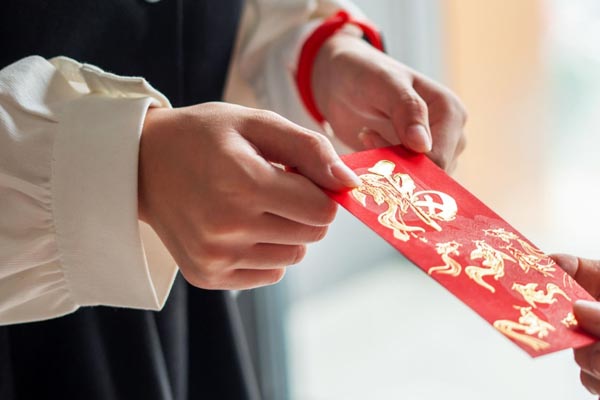Colors play a significant role in Chinese culture, often symbolizing various attributes such as good fortune, wealth, and health. The belief in lucky and unlucky colors has deep historical roots and continues to influence everything from clothing choices to interior design and even wedding decorations. In this article, we will explore the top lucky colors in China, their meanings, as well as those that are considered unlucky or neutral with negative connotations. Additionally, we will take a look at the specific colors linked to Chinese zodiac signs.
The Top Three Lucky Colors in China
In China, certain colors are traditionally considered to bring good luck, wealth, and prosperity. Among these, red, yellow, and green are the most prominent.
Red
Red holds a special place in Chinese culture and is widely regarded as the most fortunate color. It is strongly associated with joy, happiness, and good luck. Throughout history, red has been seen as a powerful color that can ward off evil spirits and negative energy. It represents vitality, strength, and prosperity, which is why it is often seen in celebrations, especially during the Chinese New Year, weddings, and other major festivals.
During Chinese New Year, red envelopes, or hongbao, are exchanged to bring good fortune and financial luck in the coming year. Red decorations are also used to decorate homes, businesses, and streets, creating an atmosphere of celebration and positivity. The bright and vibrant nature of red symbolizes warmth, joy, and the promise of a bright future.
In addition to its role in celebrations, red is also frequently used in daily life. People may wear red clothing or accessories to attract good fortune, particularly on important occasions like birthdays, anniversaries, or even job interviews. The belief that red brings good luck is so widespread that it influences everything from the colors of furniture to the design of new businesses.

Yellow
Yellow is another color of great significance in Chinese culture, deeply rooted in both tradition and history. It has long been associated with power, authority, and wealth. In ancient China, yellow was considered the color of the emperor, symbolizing imperial authority and dominance. The emperor’s robes were often adorned in shades of yellow, marking him as the supreme ruler and a divine figure on earth.
Beyond its association with royalty, yellow also represents the earth element in Chinese philosophy, particularly in the Five Elements theory (Wu Xing). This connection with the earth signifies stability, grounding, and harmony, making yellow a symbol of balance and prosperity. The color is believed to bring good fortune and is often used in auspicious settings, from weddings to business openings.

Green
Green is a color that holds deep symbolic significance in Chinese culture, representing growth, vitality, and harmony. It is strongly associated with the natural world, especially plants, trees, and the overall concept of renewal. In traditional Chinese philosophy, green is linked to the wood element, which signifies strength, resilience, and expansion. As a result, green is often seen as a color that brings health, prosperity, and good fortune.
The symbolism of green also extends to personal well-being and peace. It is believed that the color can promote a sense of balance and calmness, making it a popular choice for home decor, particularly in spaces meant for relaxation or reflection. The presence of green is said to encourage tranquility and emotional healing, contributing to a harmonious living environment.
In addition to its associations with growth and health, green is also seen as a lucky color in business and financial matters. It represents wealth accumulation, stability, and prosperity, making it a favorable color for those looking to start a new business or invest in something new.

Other Colors of Significance
Beyond red, yellow, and green, other colors also hold special meanings in Chinese culture, each carrying its unique symbolism.
Blue
Blue is a color that symbolizes trust, calm, and tranquility in Chinese culture. While not as universally lucky as red, blue holds a place of significance in Chinese traditions, especially in terms of harmony and peace. It is often used in art and design to convey a sense of balance and is also associated with the sky and water elements.

Black
Black, while often linked to the idea of darkness or negativity in many cultures, has a different connotation in China. It is seen as a color of sophistication and elegance. However, black is also associated with mystery and the unknown, and excessive use of the color can be seen as bringing bad luck. It’s important to note that black is often used in combination with other colors to create balance and avoid its potentially negative effects.
Gold
Gold is synonymous with wealth and success. It is often seen as a prosperous color and is considered extremely lucky, particularly when paired with red. The golden color is also symbolic of wealth accumulation and the attainment of great fortune. In Chinese New Year celebrations, gold accents are often added to symbolize a wish for financial abundance.

Unlucky Colors
Not all colors are seen as fortunate in Chinese culture. Some hues are believed to bring misfortune or negative energy, and therefore, people take care to avoid them, especially during important occasions.
White
In Chinese culture, white is commonly associated with mourning and death. It symbolizes the end of a cycle and is often used in funerals. Unlike in Western cultures, where white can signify purity and peace, in China, it carries a more somber meaning. Wearing white during celebrations or happy occasions is generally avoided, as it is seen as bringing misfortune.
Lucky or Neutral Colors With Negative Meanings
Some colors that are otherwise neutral or even seen as lucky in other cultures may have negative connotations in China. For example, purple, while often seen as regal and spiritual in Western cultures, can have associations with bad luck in China, especially when used excessively. Likewise, while gray is a neutral tone, it can imply dullness or sadness and is often avoided in celebrations or events that call for vibrant colors.
Know Your Lucky Chinese Zodiac Colors
In addition to general color symbolism, each Chinese zodiac sign has its own set of lucky colors, believed to enhance the personality traits and fortunes of those born under each sign. For example:
- Rat: Blue and gold are considered lucky for Rats, representing calmness and wealth.
- Ox: White and yellow are associated with the Ox, symbolizing purity and prosperity.
- Tiger: Orange and gray are seen as lucky for Tigers, representing courage and balance.
- Rabbit: Pink and blue are considered auspicious, reflecting peace and serenity.
- Dragon: Golden and silver are the lucky colors for Dragons, symbolizing wealth and power.
- Snake: Black and red are auspicious, representing mystery and vitality.
- Horse: Green and brown are favorable, symbolizing growth and strength.
- Goat: Blue and red are linked to the Goat, representing harmony and energy.
- Monkey: Gold and white are lucky, representing intelligence and fortune.
- Rooster: Brown and yellow are considered lucky for Roosters, symbolizing hard work and success.
- Dog: Red and green are auspicious, reflecting loyalty and growth.
- Pig: Yellow and gray are linked to the Pig, symbolizing wealth and tranquility.
Understanding the meanings of colors in Chinese culture can greatly enhance your appreciation for the traditions and beliefs that influence many aspects of life, from weddings to festivals and even daily choices. Whether you’re designing your home, selecting clothing for a celebration, or preparing for a significant event, choosing the right colors can bring positive energy and good fortune into your life.

